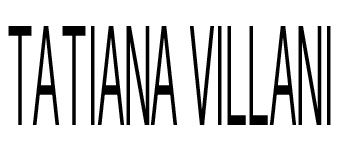Estrusione (35 cm)³ Massaciuccoli 1

(please scroll down for english version)
Il progetto Estrusione 35 cm³ è rappresentato da un dispositivo-scultura che può essere immerso in acqua e che produce un’emersione di una porzione dello specchio acquatico interessato, rendendo visibile quello che di solito è nascosto “sotto” per effetto del riflesso della luce.
Nasce nel 2017 a Empoli all’interno del progetto Un sentiero di segni/ Arte e Ambiente a cura di Alessandra Scappini.

Sul Lago di Massaciuccoli l’estrusione è stata praticata in due tempi diversi.
La prima estrusione a Massaciuccoli avviene nella parte più esterna dell’oasi, a fine agosto 2020, vicino alla Gora di Quiesa. Quello che emerge, all’interno dell’installazione, è la presenza di piante acquatiche, in particolare Myriophyllum spp., che fino a pochi anni fa erano praticamente assenti in tutta l’area. Da qui è nato un dialogo con gli operatori della Lipu che hanno risposto a varie domande. Fino al 2010 il lago e la zona palustre erano in sofferenza e le realtà che si occupano dell’ambiente hanno per anni provato a ripristinare delle condizioni ecologicamente sostenibili, per una serie di motivi, i risultati si sono visti solo a partire dal 2012, da allora si è innescato un circolo virtuoso che ha portato a quanto dichiarato dagli operatori Lipu (estratto dal testo integrale fornitomi dalla Lipu):
“Nel frattempo il Lago comincia a fare da solo…..
Gli ecosistemi naturali, quando sono abbastanza estesi e complessi, hanno una capacità di resilienza che a volte non ti aspetti. È quello che sta succedendo sul Lago di Massaciuccoli: dal 2012 è iniziata una lenta ricomparsa di vegetazione sommersa lungo tutta la sponda orientale e meridionale del lago. Si tratta di 3 specie, Myriophyllum spicatum, Myriophyllum verticillatum e Najas marina, le ultime a scomparire verso la metà degli anni ’90 e che adesso stanno ricostituendo fitocenosi molto estese ripristinando habitat importanti che hanno portato, nel giro di pochi anni, all’aumento od al ritorno di numerose specie di uccelli, pesci e anfibi. Si tornano a vedere contingenti importanti di folaghe e anatre svernanti, si rivedono giovani lucci segno di una ripresa della riproduzione e, quest’anno, dopo 13 anni, è tornato a nidificare sul lago il tarabuso.”
Per seguire le proposte dell’oasi la pagina è
https://www.facebook.com/oasi.massaciuccoli/
Un grazie speciale ai responsabili dell’Oasi che mi hanno accompagnato Marcello Labate, Andrea Fontanelli e Lucia Picchi.

Estrusione 35 cm³
The Extrusion 35 cm³ project is represented by a sculpture-device that can be immersed in water and which produces an emergence of a portion of the affected aquatic mirror, making visible what is usually hidden “underneath” due to the reflection of light.
It was born in 2017 in Empoli within the project A path of signs / Art and Environment curated by Alessandra Scappini.

On Massaciuccoli’s lake, the extrusion was carried out at two different times.
The first extrusion in Massaciuccoli takes place in the outermost part of the oasis, at the end of August 2020, near the Quiesa Gora. What emerges, inside the installation, is the presence of aquatic plants, in particular Myriophyllum spp., Which until a few years ago were practically absent throughout the area. From here a dialogue was born with the Lipu operators who answered various questions. Until 2010, the lake and the marsh area were suffering and the realities that deal with the environment have for years tried to restore ecologically sustainable conditions, for a variety of reasons, the results have only been seen since 2012, from then a virtuous circle was triggered which led to what was declared by the Lipu operators (extracted from the full text provided to me by the Lipu):
“In the meantime, the lake begins to do by itself …..
Natural ecosystems, when they are large and complex enough, have a resilience capacity that you sometimes don’t expect. This is what is happening on Lake Massaciuccoli: since 2012 a slow reappearance of submerged vegetation has begun along the entire eastern and southern shore of the lake. There are 3 species, Myriophyllum Spicatum, Myriophyllum Verticillatum, and Najas marina, the last to disappear in the mid-90s and which are now reconstituting very extensive phytocoenoses by restoring important habitats that have led, within a few years, to the increase or the return of numerous species of birds, fish, and amphibians. Important contingents of coots and wintering ducks are seen again, young pikes are seen again, a sign of a resumption of reproduction, and this year, after 13 years, the bittern has returned to nest on the lake. “

To follow the proposals of the oasis the page is https://www.facebook.com/oasi.massaciuccoli/
A special thanks to the managers of the Lipu Oasis who accompanied me: Marcello Labate, Andrea Fontanelli, and Lucia Picchi.


